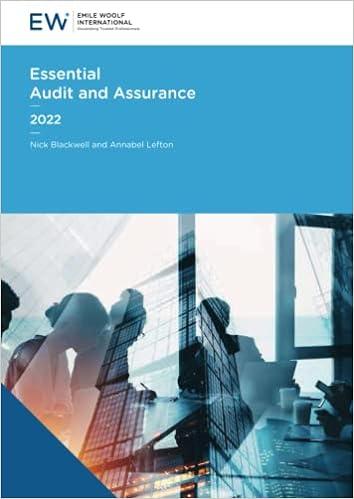






 Please help me fix the wrong answers. Thanks!
Please help me fix the wrong answers. Thanks!
Part C-August Variance Analysis During September of the current year, the controller was asked to perform variance analyses for August. The January operating data provided the standard prices, rates, times, and quantities per case. There were 1,500 actual cases produced during August, which was 250 more cases than planned at the beginning of the month. Actual data for August were as follows: Actual Direct Materials Price per Unit Quantity per Case 102 ozs. Cream base Natural oils Bottle (8-oz.) $0.016 per oz. $0.32 per oz. $0.42 per bottle 31 ozs. 12.5 bottles Actual Direct Actual Direct Labor Labor Rate Time per Case Mixing $18.20 19.50 min. Filling 14.00 5.60 min. Actual variable overhead $305.00 Normal volume 1,600 cases The prices of the materials were different than standard due to fluctuations in market prices. The standard quantity of materials used per case was an ideal standard. The Mixing Department used a higher grade labor classification during the month, thus causing the actual labor rate to exceed standard. The Filling Department used a lower grade labor classification during the month, thus causing the actual labor rate to be less than standard. Required-Part C: 10. Determine and interpret the direct materials price and quantity variances for the three materials. Round your price values for Cream Base to three decimal places and Natural Oils & Bottles to two decimal places.* 11. Determine and interpret the direct labor rate and time variances for the two departments. Do not round hours. Round your answers to two decimal places. * 12. Determine and interpret the factory overhead controllable variance.* 13. Determine and interpret the factory overhead volume variance. Round rate to four decimal places and round your final answer to two decimal places. * 14. Why are the standard direct labor and direct materials costs in the calculations for parts (10) and (11) based on the actual 1,500-case production volume rather than the planned 1,250 cases of production used in the budgets for parts (6) and (7)? *Negative amount should be indicated by the minus sign. Enter a favorable variance as a negative number using a minus sign and an unfavorable variance as a positive number. 10. Determine and interpret the direct materials price and quantity variances for the three materials. Negative amount should be indicated by the minus sign. Enter a favorable variance as a negative number using a minus sign and an unfavorable variance as a positive number. Round your price values for Cream Base to three decimal places and Natural Oils & Bottles to two decimal places. Direct Materials Price Variance Cream Base Natural Oils Bottles Actual price $0.016 $0.32 $0.42 Standard price 0.020 0.30 0.5 Difference -$0.0040 V $0.02 V -$0.08 V Actual quantity 153,000 ozs 46,500 ozs. 18,750 btls. Direct materials price variance -$612 V $930 V -$1,500 Points: 24 / 24 Direct Materials Quantity Variance Cream Base Natural Oils Bottles Actual quantity 153,000 ozs. ozs. 18,750 btls. 46,500 | 45,000 Standard quantity 150,000 18,000 Difference 3,000 ozs. 1,500 OZS. 750 btls. Standard price $0.02 V $0.30 $0.50 Direct materials quantity variance _ $60V uv $450 V UVO $375 Points: 27/27 The fluctuation in market prices caused the direct material price variances. All the Direct material quantity variances were unfavorable indicating some material losses, scrape, and quality rejections . K Points: 3/3 3/3 11. Determine and interpret the direct labor rate and time variances for the two departments. Negative amount should be indicated by the minus sign. Enter a favorable variance as a negative number using a minus sign and an unfavorable variance as a positive number. Do not round hours. Round your answers to two decimal places. Direct Labor Rate Variance Mixing Department Filling Department Actual rate $18.20 $14.00 Standard rate 18.00 14.40 Difference $0.2 -$0.40 Actual time 487.5 140.0 Direct labor rate variance $97.50 -$56.00 F Points: 15/15 Direct Labor Time Variance Mixing Department Filling Department Actual time 487.5 V 140.0 Standard time 500.0 125.0 Difference -12.5 15.0 Standard rate $18.00 $14.40 Direct labor time variance - $225.00 $216.00 The change in the labor classification caused the labor rate variances. This change could also have been responsible for the direct labor time variance. 12. Determine and interpret the factory overhead controllable variance. Negative amount should be indicated by the minus sign. Enter a favorable variance as a nega number Factory Overhead Controllable Variance Actual variable overhead V $305.00 Variable overhead at standard cost 300.00 Factory overhead controllable variance $5.00 UV The factory overhead controllable variance was caused by the variance in utilities 13. Determine and interpret the factory overhead volume variance. Negative amount should be indicated by the minus sign. Enter a favorable variar number. Round rate to four decimal places and round your final answer to two decimal places. Factory Overhead Volume Variance Normal volume (cases) 1,600 Actual volume (cases) 1,500 Difference 100 Fixed factory overhead rate $12.1600 X Factory overhead volume variance $1,230.00 X U







 Please help me fix the wrong answers. Thanks!
Please help me fix the wrong answers. Thanks!





